As an Amazon Associate I earn from qualifying purchases.
Winter. The word alone is enough to make most carp anglers zip up their rod bags and settle in for months of watching fishing videos on YouTube.
The banks are quiet, the nights are long, and the carp, we’re told, have shut up shop until spring.
But what if I told you that was only half the story? What if winter was actually the season of opportunity?
A time to hunt for the biggest, wisest fish in the lake with the banks all to yourself. It’s not easy, I’ll give you that. The game changes completely when the temperature plummets. But if you’re willing to swap your T-shirt for thermals and adapt your approach, winter can be one of the most rewarding times to be on the bank.
This isn’t just another list of tips. This is the ultimate guide to rewriting your winter angling.
We’re going to break down everything from the carp’s metabolism to the exact rigs and baits that will get you that all-important winter bite.
Let’s get started.
The Winter Mindset
Before we even think about rigs, bait, or casting a line, we need to get inside the carp’s head.
The single biggest mistake anglers make is using summer tactics in the winter. To succeed, you have to understand that the fish you’re targeting is living in a completely different world to the one it inhabited a few months ago.
Successful winter carp fishing is about thinking less like an angler and more like a carp, because:
- Their body temperature is the same as the water they’re in. Unlike us, they can’t generate their own body heat to stay warm.
- As the water gets colder, their metabolism slows right down. Think of it like a car engine ticking over instead of revving. They burn far less energy.
- Because they burn less energy, they need much less food. Their digestive system slows down, and they simply don’t have the same drive to feed as they do in summer.
- Their main goal becomes conserving energy. This is why they stop patrolling the whole lake and instead group up tightly in areas where they feel safe and the water temperature is most stable (these are the winter holding areas we’ll discuss).
Carp Behaviour: Summer vs Winter
| Aspect | Summer Behaviour | Winter Behaviour |
|---|---|---|
| Metabolism | High. Needs constant food to fuel growth and movement. | Very Low. Minimal food required, focus is on survival. |
| Movement | Active and mobile, will travel long distances for food. | Lethargic and slow, stays within a small, defined area. |
| Feeding | Aggressive, prolonged feeding spells, often in groups. | Cautious, short and sporadic feeding windows, often solitary. |
| Location | Follows the wind, patrols margins, explores all layers. | Shoals up in deep, stable water, snags, or sun-facing areas. |
Expert Tip
Forget everything you know about summer feeding spells. In winter, a bite can come at any time, but it might be the only one you get all day.
That single bleep is what you’re waiting for. The patience required for successful winter carp fishing is on another level.
Tackle Recommendation
Because winter takes can be incredibly subtle – sometimes just a slight lift of the bobbin or a single bleep – your bite indication needs to be flawless.
Swap heavy bobbins for lighter, more sensitive indicators that will show the slightest movement. This isn’t the time for tight lines and heavy leads; slack or semi-slack lines will allow you to detect those delicate drop-back bites that are so common in the cold.
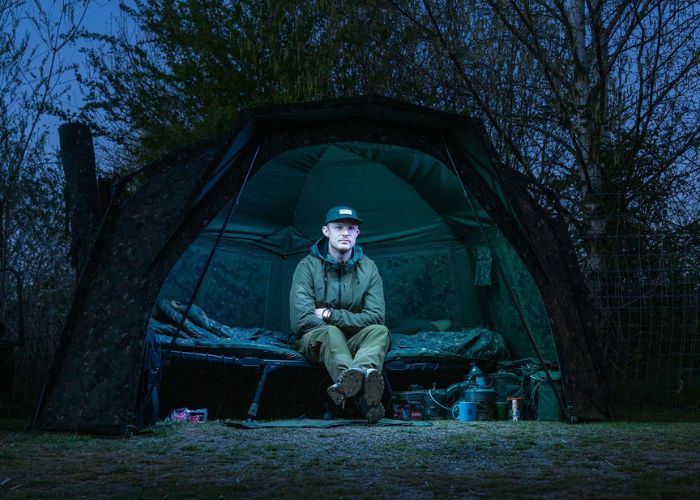
Location, Location, Location
When it comes to winter carp fishing, the ‘where’ is everything.
Forget spending hours spodding and waiting for the fish to move in. You could be waiting until spring. In winter, you have to go to the fish, and that means putting in the effort before you even think about setting up your bivvy.
Why Carp Group Up: The Winter Shoal
Unlike the summer months when carp patrol like lone wolves, winter forces them together. It’s a survival tactic.
Huddling together in a tight shoal helps them conserve precious energy and offers protection from predators like cormorants and pike, which are more active in the clearer water.
Your job isn’t to find a carp; it’s to find the carp. The whole year’s success can hinge on locating that one small, tucked-away zone where the lake’s residents have decided to see out the cold.
These ‘holding areas’ aren’t random. They are specific spots that offer two things: safety and stable temperature.
Classic examples include:
Snags and Sanctuaries
Fallen trees, thick lily beds (even the dead stalks), and out-of-bounds areas are carp magnets. They offer cover and often hold slightly warmer, sheltered water.
Silt Pockets
Often referred to as ‘black gold’ by those in the know. Silt holds natural food and can be a degree or two warmer than the surrounding lakebed.
Sun Traps
Any area that gets consistent, direct sunlight during the day. South or south-west facing banks are prime real estate as even a marginal temperature increase can trigger a brief feeding spell.
Deeper Water
Deeper spots are less affected by cold overnight frosts and biting winds, offering a more stable environment. This doesn’t always mean the deepest hole in the lake, but rather areas of consistent, comfortable depth.
Winter Holding Zones
| Hotspot | Why Carp Hold Up Here | Tactical Approach |
|---|---|---|
| Snags & Fallen Trees | Offers cover from predators (cormorants) and angling pressure. Decomposing wood can also slightly warm the immediate area. | Use strong, safe rigs (lead clips, helicopter setups). A single, bright pop-up cast with pinpoint accuracy is key. Never fish so tight you can’t land the fish safely. |
| Deep Silt Gullies | Silt is rich in natural food like bloodworm and retains heat better than gravel, offering a stable, warmer resting zone. | Use a light ‘feeling’ lead to find the soft “donk” of silt next to the “crack” of gravel. A solid PVA bag or helicopter rig prevents your hookbait from burying. |
| Dying Reed Beds | The decaying stalks and roots release warmth into the surrounding water. They also provide cover and trap any natural food that drifts by. | A quiet, underarm cast with a single bait (bread, maggots) is best. Minimal disturbance is essential as fish will be right on the reed line. |
| South-Facing Banks | These banks receive the most direct sunlight. Even a 1-2 degree temperature rise can be enough to trigger a brief feeding spell, especially in the afternoon. | This is a mobile angler’s game. Watch for cruising fish on sunny days. A zig rig or a single pop-up fished mid-water could intercept them during short windows of activity. |
| Structures | Man-made structures absorb and retain heat from the sun. They offer excellent cover and are often ignored. | Be incredibly stealthy. A handful of maggots followed by a maggot-clip rig lowered quietly into position is a winning tactic. Always check fishery rules first. |
Watercraft is Everything
Leave the tackle in the car for your first few laps of the lake. Your eyes are your most important tool!
In the stillness of a winter’s day, the smallest signs give the game away. A fizz of bubbles that isn’t from silt, a dark shape moving just under the surface, or that one solitary roll at dawn – that’s your starting point.
You are not looking for feeding fish; you are looking for signs of life. Finding where they are simply existing is the key to a successful session of winter carp fishing.
Expert Tip
On a bright, still winter’s day, get up a tree (safely!) with a good pair of polaroids. The high vantage point and the clear water can reveal secrets about the lakebed and, if you’re really lucky, the location of the entire winter shoal.
What you see in five minutes up a tree can be more valuable than five days of blanking.
Tackle Recommendation
A good pair of polarised sunglasses will cut the glare and help you see into the margins. A leading rod can help you feel for those hard gravel spots next to soft silt.
But for a true underwater map, a castable sonar device like a Deeper Pro+ is invaluable. It will reveal those hidden silt gullies and depth changes you simply can’t find from the bank, turning a guessing game into a calculated hunt
The Winter Bait Menu
Right, we’ve found where the carp are hiding. Now for the million-dollar question: what do we feed them?
Get this part wrong, and you can have the best swim on the lake and still blank.
The golden rule of baiting in winter carp fishing is simple and absolute: less is always more. You are not trying to feed them; you are trying to trick them into picking up one mouthful which is the one with your hook in it!
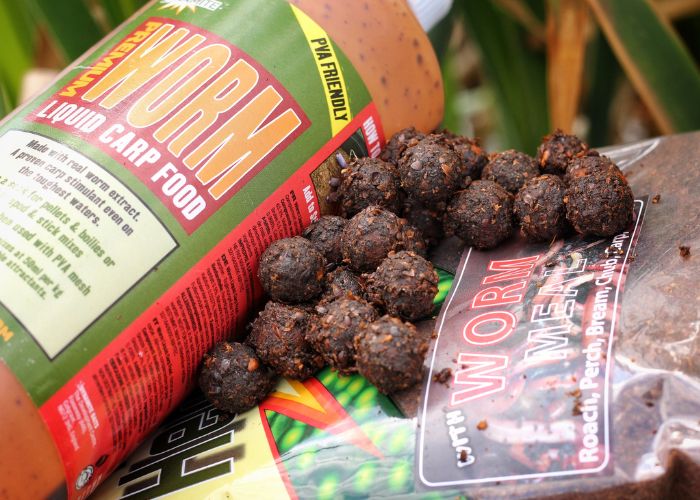
Adapting Your Bait
Remember how we talked about a carp’s metabolism grinding to a halt? This has a massive impact on what they can and will eat.
The heavy, protein-rich, oily fishmeal boilies that are so effective in summer will sit in a carp’s gut for a very long time in cold water, making them feel full and lethargic. You could put a kilo of these baits in and effectively kill the swim for the rest of your session.
Winter is all about high-attraction, high-visibility, and high-digestibility.
Visual Baits
With the water being clearer, a bright, single hookbait can be all you need to pull a curious carp down to investigate. Think bright pink, yellow, or washed-out white pop-ups.
Digestible Baits
You need baits that a carp can process easily. This is where natural baits come into their own.
Maggots are, without a doubt, the king of winter baits. They are pure, digestible protein and the wriggling movement is a massive trigger.
Sweetcorn is a close second, with its bright colour and sugary content.
Sticky Baits Pineapple Pop Ups
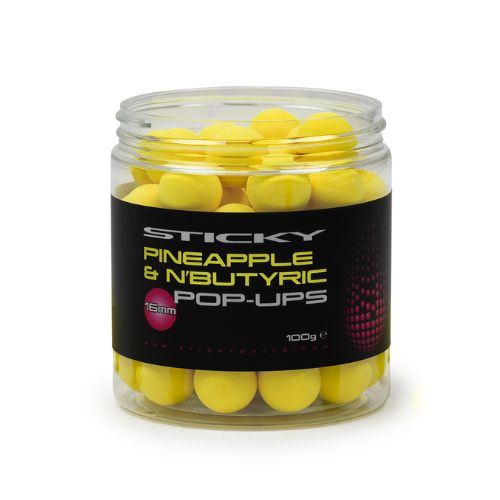
Pineapple pop-ups are a historically proven and highly effective carp bait due to the powerful combination of pineapple esters and N'Butyric acid.
Mainline Essential Cell Boilies

Formulated with top-quality base mix ingredients and enhancers, then immediately air-dried to lock in the effectiveness of their active ingredients.
Dynamite Baits XL Sweetcorn
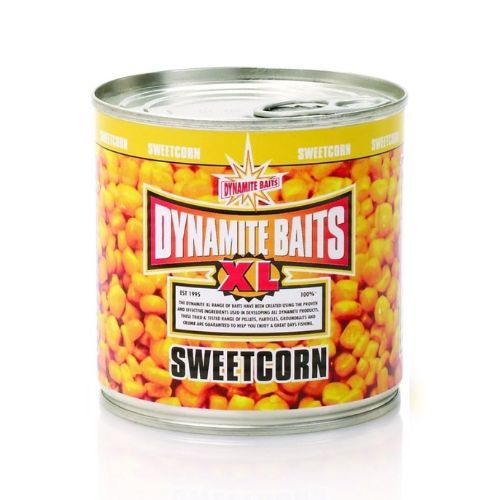
Offering the perfect texture that is both tough enough to stay on the hook during a cast and soft enough to be readily taken by fish.
Quantities & Attraction: Think ‘Tea Bag’ not ‘Dinner Plate’
Forget the spod rod. Your entire baiting strategy should be focused on creating a tiny, concentrated patch of attraction right next to your hookbait.
The aim is to create maximum scent and food signals with minimum food content.
The Single Cast Approach
Often, the best tactic is a single, perfectly presented hookbait with no free offerings at all. A bright pop-up cast towards a showing fish is one of the most effective methods in winter carp fishing.
PVA is Your Best Friend
A small, solid PVA bag is the ultimate winter presentation. A handful of maggots, some crushed, washed-out boilies, or a micro-pellet mix creates a perfect little parcel of attraction that won’t overfeed the fish.
Liquids
This is where you can give yourself a real edge.
In cold water, oil-based liquids congeal and become far less effective. You need thin, water-soluble, alcohol-based liquids that will disperse and send food signals through the cold, dense water.
Top Winter Baits
| Bait | Wht It Works | Tactics |
|---|---|---|
| Live Maggots | Unbeatable movement and visual appeal. Highly digestible and a natural food source that carp will always eat. | On a maggot clip for a writhing ball of attraction, or inside a solid PVA bag to prevent them from burying in silt. |
| Sweetcorn | The ultimate visual hookbait. The bright yellow stands out perfectly, and its high sugar content is a massive draw for carp. | A single grain tipped on a hair, or as part of a small PVA bag mix. Two grains of fake corn balanced on a hair is also a classic. |
| Washed-out Boilie | A subtle, pale boilie looks like it has been in the water for a long time and is therefore “safe”. It’s a great tactic for pressured fish. | A single 12mm pop-up or wafter presented on its own. Soak them in lake water for a few days before your session for the best effect. |
| Bread Flake | The ultimate stealth bait for margin work. Its slow-sinking, fluffy nature is irresistible to carp that feel safe close in. | Pinched onto the back of the hook and lowered quietly into the margins. Watch your line like a hawk for the slightest twitch. |
Rigs & Presentation
You’ve found the fish and you’ve chosen the perfect bait. The final piece of the puzzle is the presentation.
In winter, with crystal clear water and carp that will inspect a bait for an age before cautiously picking it up, your rigs and end tackle have to be flawless.
Clumsy, oversized components will get you rumbled time and time again. Success in winter carp fishing is a game of percentages, and your rig is where you gain that final, critical edge!
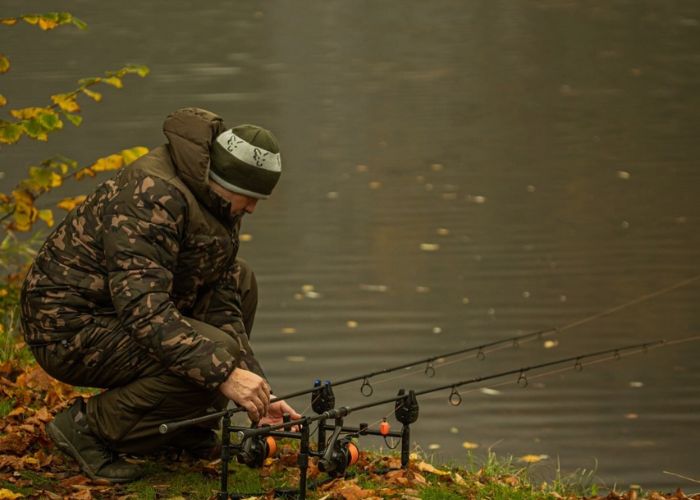
Scaling Down for Success
Forget the heavy-duty gear you’d use for battling fish in summer weed beds. Winter is all about finesse.
The water is often clearer, meaning rigs are more visible, and the takes can be incredibly delicate. Your entire approach needs to be scaled down to match the lethargic nature of the carp.
Hooks
This is the most important component.
A carp isn’t likely to bolt off, so you need a hook that will prick and hold with minimal pressure. This means switching to smaller sizes like an 8 or even a 10, and ensuring they are dangerously sharp.
A smaller hook is lighter, allowing your hookbait to act more naturally, and is far less conspicuous.
Hooklinks
Heavy, stiff booms have their place, but winter often calls for subtlety.
A soft, supple braided hooklink or a thin, low-diameter fluorocarbon will lie much more naturally on the lakebed and give your bait maximum freedom of movement.
Leads
Leave the 4oz distance leads at home. A lighter lead of around 1.5oz to 2.5oz will create far less disturbance when it enters the water – crucial when casting towards a tight shoal of dormant fish.
A lighter carp lead also gives you a much better ‘feel’ for the lakebed when you’re trying to locate those subtle silt pockets.
My Top 3 Winter Rigs
You don’t need a tackle box full of complicated rigs for your winter carp fishing. You just need a few proven presentations that you can tie perfectly and trust implicitly.
These are my go-to rigs that have never let me down when the temperatures drop.
1. The Low-Lying Pop-Up Rig (The Spinner/Ronnie Rig)
This rig is a phenomenon for a reason, and it’s particularly deadly in winter.
It presents a single, bright pop-up just millimetres off the lakebed, making it irresistible to an inquisitive carp. It’s perfect for casting over low-lying weed or silt and has phenomenal hooking properties.
Paired with a small, sharp hook and a 12mm pop-up, it’s a delicate presentation that screams confidence.
2. The Solid PVA Bag Rig
This is the ultimate winter trap.
It offers a guaranteed perfect presentation every single time, with a small pile of attractive bait right next to your hookbait.
Crucially, it hides all your end tackle – the lead, the hooklink, everything is concealed within the parcel of goodness. Use a short, supple hooklink of 3-4 inches inside the bag with a small boilie or piece of fake corn.
The explosion of scent from a fast-melting winter PVA bag can be the only thing needed to trigger a bite from a dormant carp.
3. The Maggot Clip Rig
If you’re using the number one winter bait, you need the number one rig to present it.
A simple hair rig tied with a small metal rig ring or a dedicated maggot clip on the end allows you to thread on dozens of maggots, creating a writhing, natural ball of attraction.
Tip it with a tiny piece of foam or fake corn to make the hookbait critically balanced, so it flies into the carp’s mouth at the slightest suck.
Expert Tip
Get into the habit of checking your hook points constantly. A hook that feels sharp to your finger might be blunted after being dragged over gravel.
In winter, a slightly dull hook point can be the difference between a dropped take and a fish on the bank. A quick touch-up with a hook file before every cast is a habit that will catch you more fish, guaranteed.
Tackle Recommendation
Invest in the best quality hooks you can afford. Brands like Gardner, Korda, and Nash produce exceptionally sharp, reliable patterns out of the packet.
A ‘wide gape’ or ‘kurv shank’ pattern in a size 8 is a fantastic all-rounder for most winter situations. Pair them with a hook-sharpening kit to take their sharpness to the next level.
It’s that 1% edge that makes all the difference in winter carp fishing.
Gardner Covert Dark Wide Gape Hooks
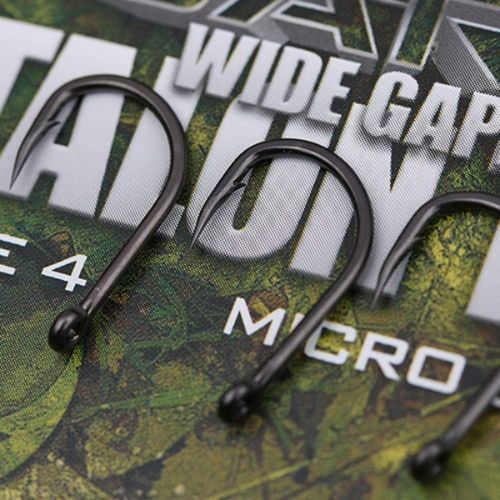
A hugely popular and versatile pattern prized by carp anglers for its superb hooking efficiency and stealthy design.
Korda Kurv Shank B Barbless Hooks
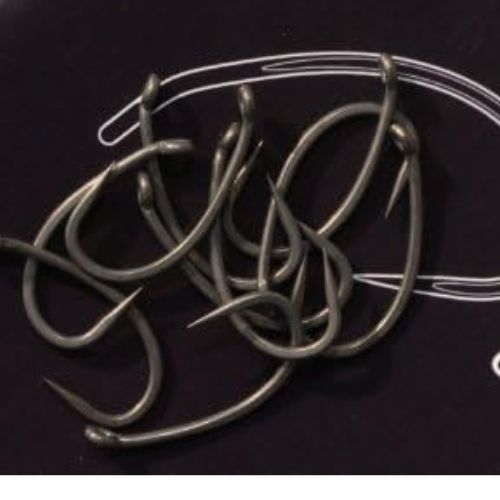
Superb anti-eject properties by naturally forcing the hook to turn and catch hold in the carp's mouth without the need for shrink tube or a kicker.
Nash Pinpoint Twister Hooks

A highly aggressive and effective hook pattern, renowned for its exceptional turning speed and the unparalleled sharpness
Weather, Patience & Adaptability
So, you’ve mastered the theory, found the fish, and presented a perfect rig. This is where the real challenge of winter carp fishing begins. It’s the bit that happens between your ears.
More so than any other season, winter is a mental game.
It tests your patience, your watercraft, and your willingness to adapt. The anglers who succeed are the ones who can tune into the subtle rhythms of the lake and the weather, and who know when to act and when to simply wait.
Be a Weather Watcher
In summer, you might get away with just turning up, but in winter, the weather dictates everything.
A subtle shift in conditions can be the trigger for that one feeding spell of the day. You need to become a student of the forecast!
Pressure is Key
A stable, high-pressure system with bright sunshine and cold, frosty nights is often the worst-case scenario. The carp will be lethargic and unwilling to move.
What you are looking for is a drop in atmospheric pressure. A low-pressure front, often bringing with it mild, overcast, and rainy conditions, is the number one trigger for a winter bite.
Follow the Wind
While a cold north or easterly wind can kill the fishing, a mild south-westerly is your best friend.
It brings warmer air, and even a slight increase in water temperature can get the carp moving. If a mild wind has been blowing into one bank for 24 hours, that’s where you should be looking.
Embrace the Sun
On those cold, crisp days, the low winter sun can be a powerful activator.
As it warms the upper layers or a shallow marginal shelf, carp will often move in to bask and take advantage of the tiny temperature increase.
Be ready for short feeding windows, often between midday and 3 pm.
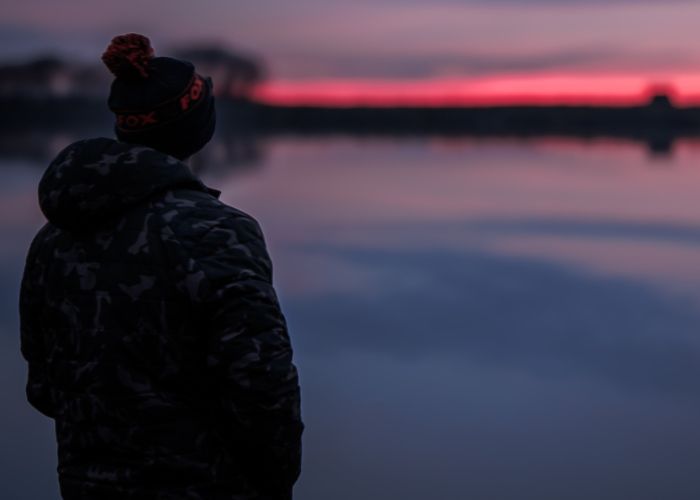
The Patience Game vs. Staying Mobile
This is the great dilemma of winter carp fishing. Do you sit it out on a spot you’re confident in, or do you keep moving, trying to find that one fish willing to feed?
The answer depends entirely on what you know.
When to Stay Put
If you have found the fish – you’ve seen them roll, you’ve found their holding area with a Deeper Pro, or you have solid information – then do not move.
Your best chance is to sit on your hands, keep disturbance to an absolute minimum, and wait for that small window of activity. Recasting every hour will just push them out of the area.
When to Move
If you’re not 100% confident you’re on the fish, you must stay mobile. Don’t set up a full camp.
Fish with minimal gear, ready to move swims at a moment’s notice.
A couple of hours in each likely-looking spot is enough. A single bleep or a liner is a sign to stay a little longer; total silence is a sign to keep searching.
Expert Tip
Don’t be a ‘casting machine’. A single, well-placed cast can be enough.
Every recast sends disturbance through the swim and can push lethargic carp away. Before you leave the house, tie up a few spare rigs with hookbaits already attached and soaked in glug.
If you need to recast, you can do so quickly and quietly without having to rummage through your tackle box on the bank.
Tackle Recommendation
Your most important tackle in this phase is what you wear. A high-quality set of thermals and a waterproof, windproof outer layer will keep you warm and focused.
If you’re staying mobile, a lightweight roving chair and a small rucksack are far better than a barrow loaded with gear.
Being comfortable allows you to make better decisions, and being mobile allows you to act on them. This combination is deadly for successful winter carp fishing.
Prologic Thermal Suit
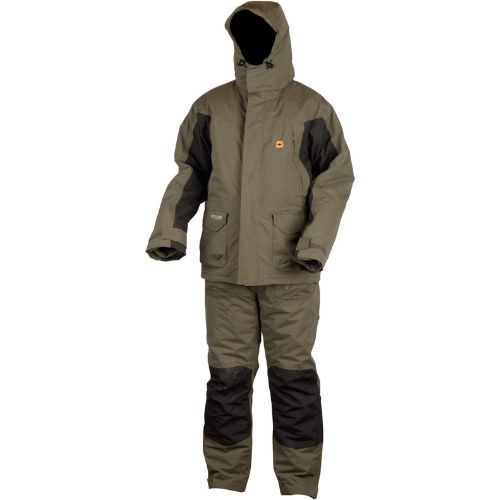
A heavy-duty jacket and high-waisted salopettes, engineered to offer anglers complete warmth and protection during the coldest and wettest conditions.
Conquering The Darkness: Night Fishing
The sun dips below the horizon at 4 pm, leaving you with fourteen hours of darkness.
This is the point where many day-session anglers pack up and head for the warmth of home. But for the dedicated, the winter night can be a time of great opportunity, if you’re properly prepared for it.
It’s a test of endurance and comfort, but the rewards – often the biggest fish in the lake – can be well worth it!
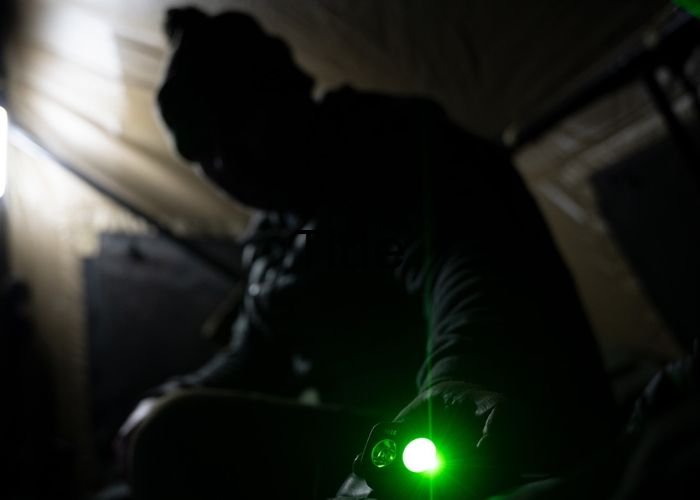
Is It Worth It? The Great Debate
Let’s be honest: winter carp fishing at night is not for the faint of heart. It’s long, it’s cold, and it can be brutally uneventful.
However, on many lakes, the carp drop their guard under the cover of darkness. The immense bankside pressure of the summer disappears, and they may feel safer to move out of their holding zones for a brief feed.
The key is to change your expectations. You’re not waiting for multiple runs. You are setting a trap and waiting for one chance.
Often, bites will come in very specific, short windows, sometimes in the middle of the night. If you can stay warm, comfortable, and motivated, you’re giving yourself a chance that the day-only anglers are missing.
Comfort is Not a Luxury; It’s a Necessity
You cannot fish effectively if you are shivering and miserable.
Your single biggest priority for a winter overnighter is staying warm and dry. This isn’t about being pampered; it’s about maintaining your focus and your ability to fish properly.
1. Clothing
Layering is crucial.
Start with a moisture-wicking base layer (thermals), add a fleece mid-layer, and finish with a high-quality waterproof and windproof outer suit.
2. Your Sleep System
This is non-negotiable. You need a genuine 5-season sleeping bag and a decent bedchair that gets you off the cold ground. A bivvy or shelter is essential to protect you from wind and rain.
3. A Hot Meal
A warm meal and a hot drink can transform your mental state. A small, efficient gas stove is one of the most important bits of kit you can carry.
Trakker Big Snooze Sleeping Bag
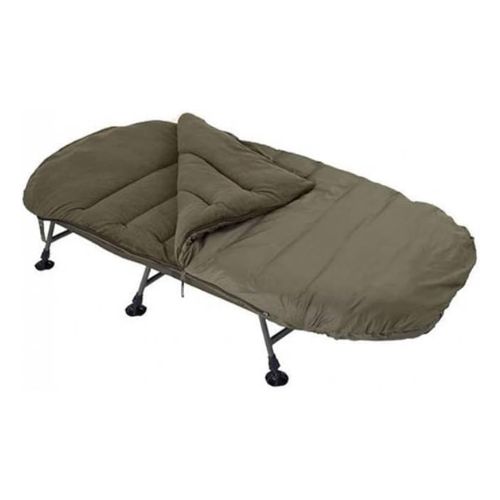
An iconic and enduringly popular sleeping bag in the carp fishing community, widely regarded for its exceptional comfort, reliability, and value.
Night-Time Tactics: Keep it Simple!
When you get a take at 2 am in freezing temperatures, the last thing you want is to be dealing with a complex, tangled rig.
Simplicity is everything.
Have Spares Ready
Before it gets dark, tie up several spare rigs complete with hookbaits.
Store them on a rig board so you can unclip the old one and clip on a new one in seconds, minimising your time in the cold and getting the rod back on the spot with minimal fuss.
Minimise Disturbance
Keep noise and light to an absolute minimum.
Use the dimmest setting on your head torch. Drop your bobbin, clip on the new rig, and get it back out there as quietly as possible.
Know Your Spots
Mark your lines with tape or elastic during the day so you can clip up and hit the same spot accurately in total darkness without needing to thrash the water to a foam with a marker float.
Expert Tip
Don’t neglect the margins at night. Carp often feel safer coming right in close under the cover of darkness.
A single, super-quiet cast with a light lead and a piece of bread flake or a bright pop-up placed just a rod length out can produce a surprise bite while your other rods remain silent further out.
Tackle Recommendation
A well-ventilated bivvy heater can be a game-changer, turning your shelter into a comfortable base camp.
Safety is paramount, so always choose a heater designed specifically for bivvy use and ensure you have adequate ventilation to prevent carbon monoxide build-up.
Additionally, a reliable power pack is essential for keeping your head torch, phone, and receiver charged through the long night.
Your winter carp fishing experience will be far more enjoyable and effective if you invest in staying warm and powered up.
Conclusion: Rewrite Your Winter
So there you have it. Winter carp fishing is a different sport entirely. It’s a game of chess, not draughts.
It demands more from you in terms of watercraft, finesse, and, above all, patience. It will test you, and there will be cold, fishless days that make you question your sanity!
But by understanding how the carp’s world fundamentally changes – how it slows down, groups up, and waits – you can adapt your approach to match.
It’s about leaving the big beds of bait and heavy tackle at home and embracing a more subtle, mobile, and thoughtful way of angling.
The rewards are there for the taking: huge, old warriors at their top weights, the magic of a silent, frosty bank all to yourself, and the immense satisfaction of knowing you outwitted a carp when almost everyone else was at home.
Don’t let the cold beat you. Get your thermals on, get out there, and prove them all wrong.
FAQs
Do carp actually stop feeding in the winter?
No, that’s a common myth. Carp don’t stop feeding, but their metabolism slows right down in the cold water. This means they feed much less, for much shorter periods, and are far more selective about what they eat. The key is to present a small, highly attractive bait directly to them.
What is the best time of day for winter carp fishing?
While a bite can come at any time, the most consistent feeding spells often occur during the warmest part of the day. This is typically from late morning to mid-afternoon (around 11 am to 3 pm), especially on bright, sunny days when the sun has had a chance to warm the water by a degree or two.
Can I still use boilies in the winter?
Yes, but with a different approach. Forget piling in kilos of heavy, protein-rich fishmeal boilies. A single, highly visual “wafter” or pop-up in a bright colour (like white, pink, or yellow) is far more effective. These “single hookbait” tactics are designed to grab a carp’s attention and provoke a bite out of curiosity rather than hunger.
How much bait should I introduce in a winter session?
Less is always more. For a day session, you might only need a small PVA bag of crushed boilies or a handful of maggots with each cast. The aim is to create a tiny patch of attraction around your hookbait, not a large bed of food. A lethargic carp can fill up on just a few baits, so over-baiting is the quickest way to ruin your chances.
What’s more important in winter: bait or location?
Location, 100%. You can have the best bait and rigs in the world, but they are useless if there are no fish in front of you. A winter carp will not travel far for food. Spending your first few hours watching the water and finding where the fish are shoaled up is far more important than anything else you do.
